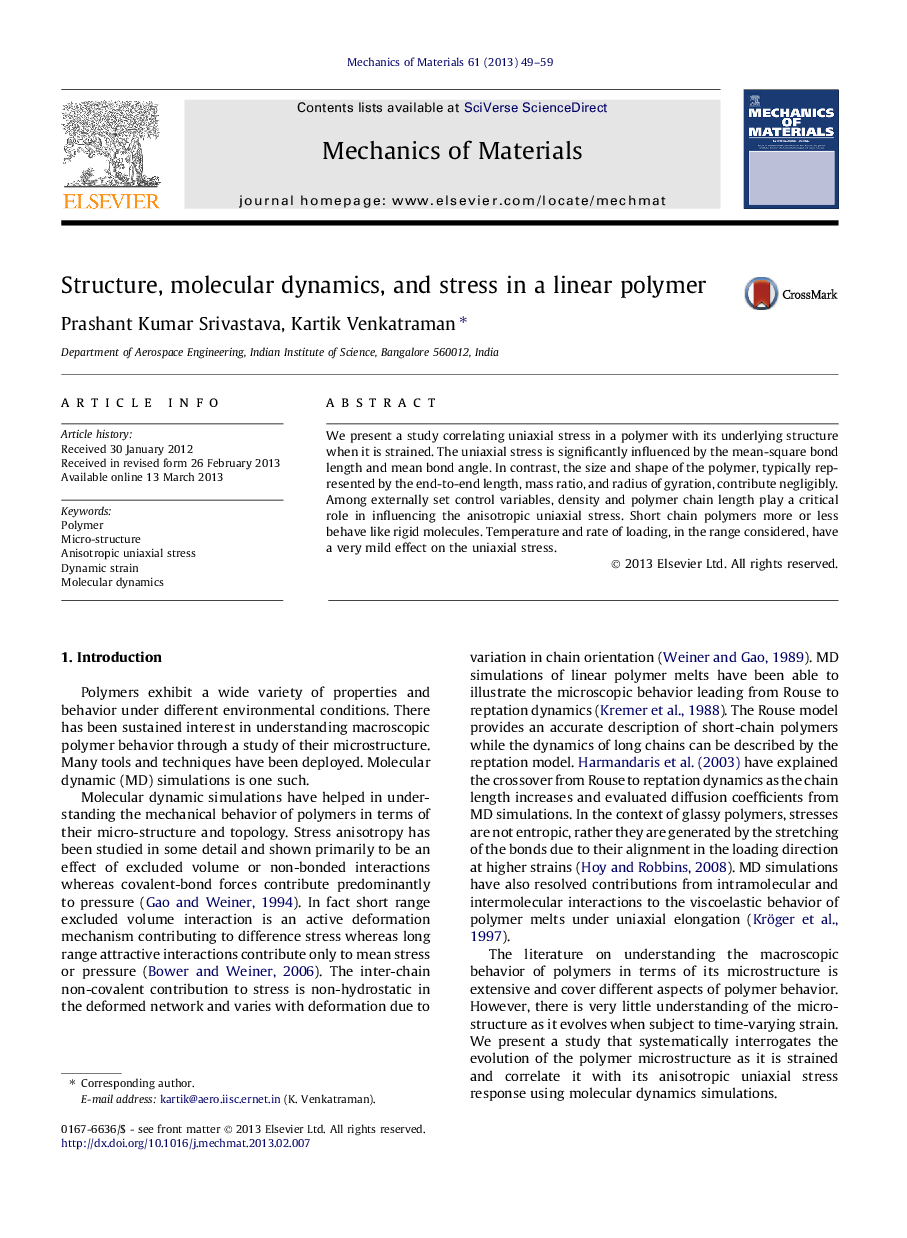| Article ID | Journal | Published Year | Pages | File Type |
|---|---|---|---|---|
| 799800 | Mechanics of Materials | 2013 | 11 Pages |
•The anisotropic stress developed in a polymer is strongly dependent on its micro-structure.•The mean-square bond length and bond angle significantly influence the stress.•The end-to-end length, mass ratio, and radius of gyration, contribute negligibly.•Density and polymer chain length play a critical role in influencing the anisotropic stress.•Temperature and rate of loading have a very mild effect on the stress.
We present a study correlating uniaxial stress in a polymer with its underlying structure when it is strained. The uniaxial stress is significantly influenced by the mean-square bond length and mean bond angle. In contrast, the size and shape of the polymer, typically represented by the end-to-end length, mass ratio, and radius of gyration, contribute negligibly. Among externally set control variables, density and polymer chain length play a critical role in influencing the anisotropic uniaxial stress. Short chain polymers more or less behave like rigid molecules. Temperature and rate of loading, in the range considered, have a very mild effect on the uniaxial stress.
